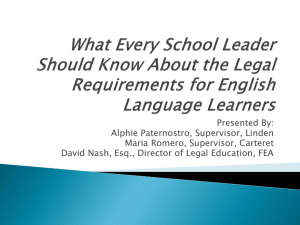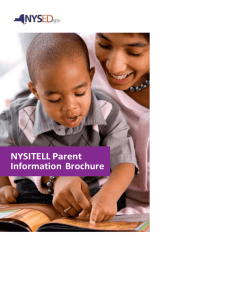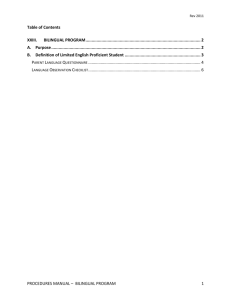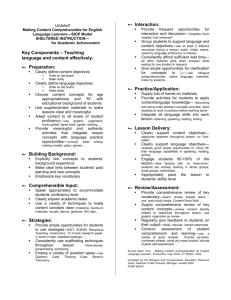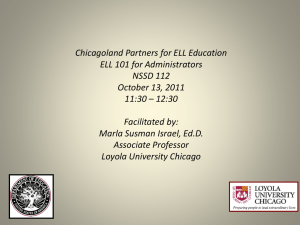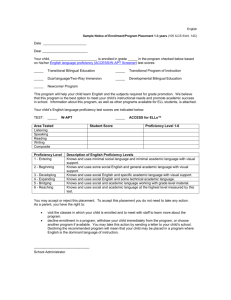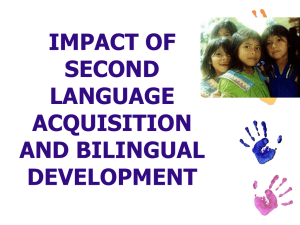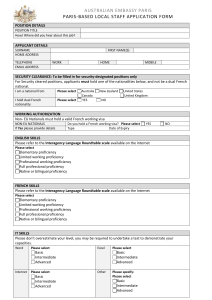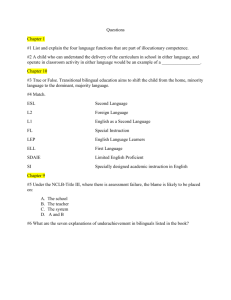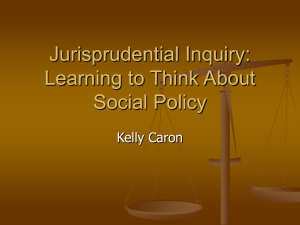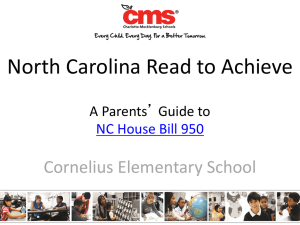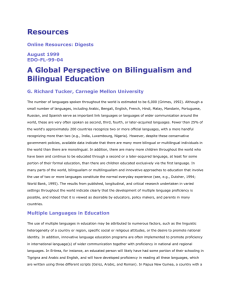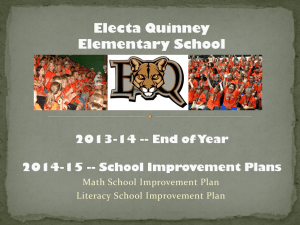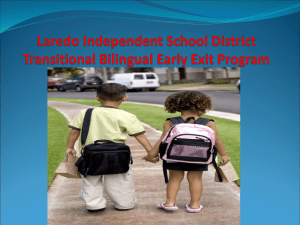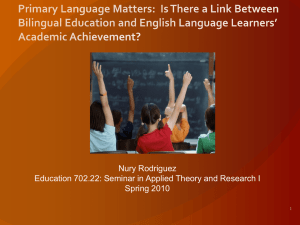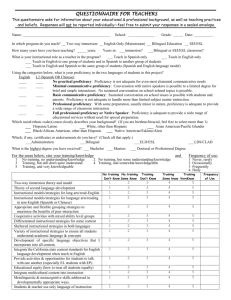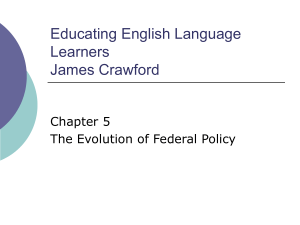English Language Learners Referral and Assessment: Gwinnett
advertisement
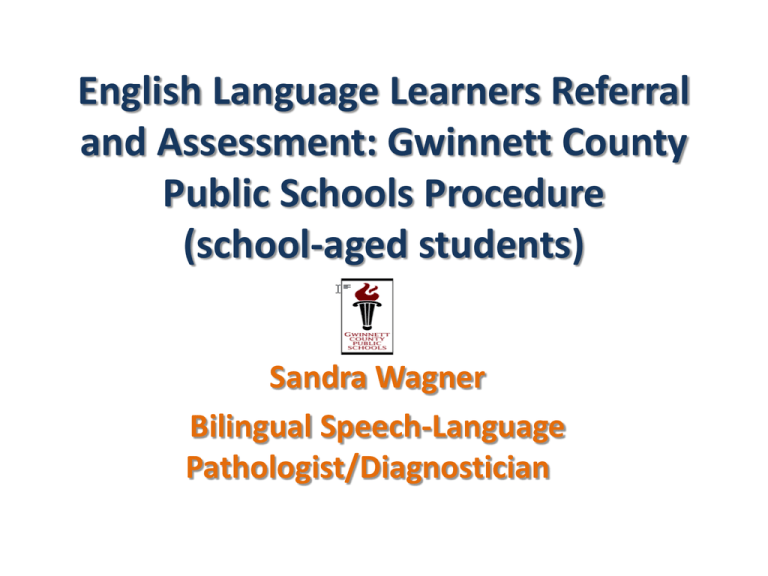
English Language Learners Referral and Assessment: Gwinnett County Public Schools Procedure (school-aged students) Sandra Wagner Bilingual Speech-Language Pathologist/Diagnostician Objectives • Understanding the importance of gathering pre-referral data • Acquiring fundamentals of appropriate ELL referrals • Completing thorough assessment and writing comprehensive report • Understanding the repercussions of inappropriate referrals and how to address ELL student needs in the classroom A COMMUNICATION DIFFERENCE/ DIALECT is a variation of a symbol system used by a group of individuals that reflects and is determined by shared regional, social, or cultural/ethnic factors. A regional, social, or cultural/ethnic variation of a symbol system should not be considered a disorder of speech or language. ASHA Conference 2003 ASHA Documents Language Learning Disability • A language-learning disability is defined as a student’s underlying inability to learn and process any language adequately. • A language –learning disability exists when a student tries to learn two language codes with an underlying language system that is inadequate even for one Roseberry-McKibbin 2000 BICS (Basic Interpersonal Communication Skills) • Language proficiency in everyday contexts • Basic vocabulary: simple nouns, verbs, adjectives, adverbs, prepositions • Conversational pragmatics: simple speech acts, conversational turn-taking, requesting clarification • 1-3 years to acquire • In most language samples (Cummins, 1984) CALP (Cognitive Academic Language Proficiency) • Manipulation of language in decontextualized academic situations • Academic language; advanced semantics: abstract concepts, conjunctions • Academic pragmatics: classroom interaction, routines, speeches, decontextualized settings (i.e., phone conversation) • 5-7 years to acquire… 5-10 (Thomas & Collier, 2002) • Many formal tests (Cummins 1984) Did you know? The average native English speaker gains about ten months of academic growth in one tenmonth academic year. ELL students must outgain the native speaker by making 1.5 year’s progress in English for six successive school years. Thus, in order to have skills that are commensurate with those of native English speakers, ELLs must make nine years progress in six years. Thomas & Collier, 1998 More lingo… • Interference or transfer: communicative behavior from L1 transfers onto L2 (“He no do his work”; “I am more big”) • Silent period: lack or little output + learning rules of new language; focus on listening and comprehension (younger=longer); how long? • Acculturation: psychological integration with speakers of L2; EL acquires L2 to the degree that they are acculturate (integrate with L2 speakers) …a few more… • Code Switching: alternating between 2 languages within single sentences or discourse (“Mi maestra say good job”) • Language Loss: if use of L1 decreases, it’s common for EL to lose skills in that language while acquiring L2 proficiency • Additive Bilingualism: L1+L2 reinforced=high proficiency in both. L1 nurtured. Goal: fluent and balanced bilingual …last ones, promise! • ACCESS test (Assessing Comprehension and Communication in English State to State): secure large-scale English language proficiency assessment given to Kindergarten through 12th graders who have been identified as ELs • CAN DO chart: Descriptors commonly used by ESL teachers in coaching general education teachers about differentiated instruction for ELs IDEA (2006) Section §300.34 Evaluation Procedures Each public agency must ensure that assessments and other evaluation materials used to assess a child are provided and administered in the child’s native language or other mode of communication and in the form most likely to yield accurate information on what the child knows and can do academically, developmentally, and functionally, unless it is clearly not feasible to provide or administer. OBSERVATION BICCS (Bilingual Inventory of Classroom Communication Skills) CAN DO chart (http://www.wida.us) ACCESS summary sheet PILS (Parent Inventory of Specific Language Skills) Parent Questionnaire Parent Questionnaire Parent Questionnaire Parent Questionnaire Resources- sound chart Resources- phonology Resources- syntax/morphology What have we learned today? White Flags • Dialectal differences in sound production • Morphology errors • Language loss • Silent period • Code-switching • Disfluency in only one language Red Flags • Parent concerns • Bilingual teacher concerns • Family history of disability • Siblings performing better • Inadequate pragmatic skills (e.g., reported by peers) Finally, don’t forget… • Limited experiences (in using a language) CAN BE solely responsible for communication differences/ difficulties • No absolutes, no simple cases, no assumptions • The more evidence the better • Identifying communication disorders is most difficult when background includes another language • Team approach to investigate or ‘eliminate’ You can contact me at: sandra_wagner@gwinnett.k12.ga.us sandra_wagner92@yahoo.com

